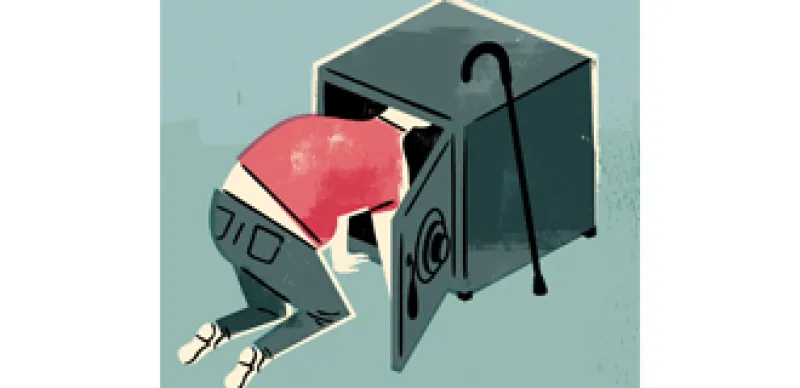The struggle of governments and corporations to sustain America’s defined benefit pensions may grab all the headlines, but there’s a parallel crisis brewing among defined contribution plans. Employees enrolled in these plans must decide how much to save — and the way things are going, most of them won’t have enough for retirement. Employers are trying to turn the tide by taking workers’ contributions from their pay whether they’ve signed up for the company plan or not. So far, it’s helping.
Somebody needs to act. Three quarters of participants in defined contribution plans will fall short of their retirement goals, according to an October report from Financial Engines, a Palo Alto, California–based company that provides investment advice to plan participants through managed accounts or over the Internet. Passivity and lack of investment skill are the chief villains. Roughly 25 percent of employees enrolled in defined contribution plans let one fifth of their account balances languish in company stock instead of diversifying, says Christopher Jones, CIO of Financial Engines, whose study of 2009 data spans 2.8 million 401(k) portfolios at 272 plan sponsors.
Workers also neglect the balances they roll over from former employers’ plans into IRAs. “Our data show that most people who own an IRA are not contributing,” says Craig Copeland, senior research associate at the Employee Benefit Research Institute (EBRI). The median IRA account barely topped $20,000 at the end of 2008, Washington-based EBRI notes. Even when combined with non-traditional IRAs, the average IRA balance is less than $70,000. “There’s a lot of inertia among participants in 401(k) plans,” Copeland says.
“The typical [defined contribution] participant is neither very well informed nor particularly engaged in the process,” adds Jones, who looks to management to help break the block. “Employers are going to determine the success of our retirement system in this country.”
Auto-enrollment plans — which require employees to opt out — and automatic escalation of contributions boost savings rates, Copeland and Jones have found. Dropout rates decline too. Among clients of New York–based J.P. Morgan Retirement Plan Services, less than 12 percent of participants had opted out of auto-enrollment as of last December.
These changes to defined contribution plans have raised participation, agrees Tom Kmak, CEO of Fiduciary Benchmarks, a Portland, Oregon–based firm that builds benchmarks for plan sponsors. Opt-out-style plans took off after the Pension Protection Act of 2006. In 2007 the Department of Labor freed plan sponsors from potential liability for enrolling employees automatically in managed accounts.
Employer-driven plans are outpacing traditional opt-in plans. Participation is 92 percent with opt-out plans, compared with 75 percent for opt-in, Copeland says, and Financial Engines reports similar findings. After employers in the latter’s survey reenrolled staff in managed accounts, almost twice as many were on track for retirement: 57 percent versus 31 percent for opt-in plans. In one client case study by J.P. Morgan Retirement Plan Services, participation in plans that added opt-out and auto-escalation features swelled from 65 percent to 90 percent in the first 30 days. Meanwhile, the average contribution rate rose to 7.07 percent of salary from the standard auto-enrollment rate of 5 percent.
Despite the safe harbor provided by legislation and Department of Labor guidelines, most plan sponsors still only offer automatic enrollment to new hires, experts say. This restriction may stem from concerns about the cost of reenrolling employees, says Copeland, who has noticed that some plan sponsors have reduced their matching contributions since the financial meltdown. Going back to reenroll staff could even affect the cost-benefit analysis, he adds: “If there is a high turnover in the labor force, administrative costs of starting up and canceling plans would not be cheap.”
That kind of help isn’t a luxury for tomorrow’s retirees, many of whom are still gravely unprepared.






